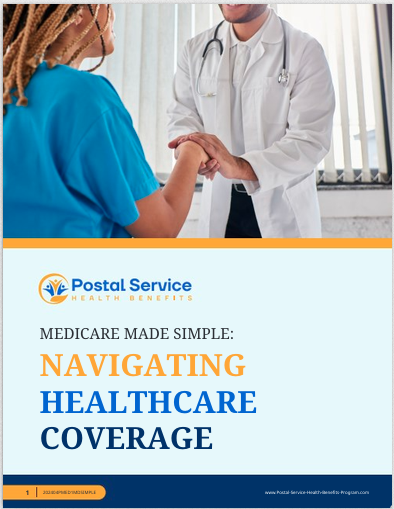Key Takeaways
- The shift from the Federal Employees Health Benefits (FEHB) program to the Postal Service Health Benefits (PSHB) plan is set to take effect in 2025, impacting all postal employees and retirees.
- Understanding the differences between FEHB and PSHB, as well as the specific timelines for transitioning, is crucial for postal employees to ensure continuous and adequate health coverage.
Understanding the Shift from FEHB to PSHB: What Postal Employees Need to Know
Beginning in January 2025, a significant change will impact health benefits for postal employees and retirees. The Postal Service Health Benefits (PSHB) program will replace the Federal Employees Health Benefits (FEHB) program as part of the broader changes mandated by the Postal Service Reform Act of 2022. This shift is critical to the future of healthcare for postal workers, making it essential for current employees and retirees to understand what this change entails, how it will affect them, and what steps they need to take to ensure their health coverage remains uninterrupted.
What is PSHB and Why is it Being Implemented?
The PSHB program is a new health benefits system designed specifically for postal employees and retirees, created under the Postal Service Reform Act of 2022. This legislation was signed into law on April 6, 2022, with the intent of stabilizing the financial situation of the United States Postal Service (USPS) and ensuring the long-term viability of its health benefits. The PSHB is set to operate separately from the existing FEHB program, focusing exclusively on postal workers.
The reason behind this change is multifaceted. The FEHB program has served federal employees, including postal workers, for decades. However, due to the unique challenges faced by USPS, including financial strain and the need to align more closely with Medicare, the PSHB was created to offer a tailored solution. This program aims to provide similar coverage options while streamlining the transition for employees nearing Medicare eligibility.
Key Differences Between FEHB and PSHB
While the PSHB will retain many of the core features of FEHB, there are crucial differences that postal employees need to be aware of:
- Eligibility and Enrollment: Unlike the FEHB, which covers a broad range of federal employees, the PSHB will be exclusively for USPS workers and retirees. All postal employees currently enrolled in FEHB will automatically be transitioned to PSHB starting in 2025.
- Medicare Integration: One of the most significant changes is the stronger integration with Medicare. Under PSHB, postal retirees aged 65 and older who are eligible for Medicare Part A and Part B will be required to enroll in these programs as a condition for receiving PSHB benefits. This mandatory enrollment is intended to reduce overall costs and ensure comprehensive coverage for retirees.
- Plan Options and Coverage: Although PSHB will offer similar health plan options as FEHB, including various levels of coverage and providers, the exact details of the plans and how they will differ from the current FEHB options remain to be clarified. Postal employees will need to carefully review their options during the open enrollment period to select the best plan for their needs.
- Cost and Contributions: The cost structure of PSHB, including premiums and out-of-pocket expenses, is designed to be comparable to FEHB. However, specific details on contribution rates and how they might change from the current FEHB standards are expected to be released closer to the 2025 implementation date.
What Postal Employees Need to Do
Given the impending transition, postal employees and retirees should take proactive steps to prepare:
- Stay Informed: USPS and the Office of Personnel Management (OPM) will provide detailed information about the PSHB program as the implementation date approaches. Employees should regularly check official communications to stay updated on any new developments or requirements.
- Review Medicare Enrollment: For retirees and those nearing retirement, understanding Medicare eligibility and enrollment is crucial. Those who are or will be eligible for Medicare by 2025 should ensure they are enrolled in Medicare Part A and Part B to avoid any disruption in their health coverage under the new PSHB program.
- Evaluate Plan Options: During the open enrollment period before the transition, postal employees should compare the available PSHB plans to ensure they select one that best meets their healthcare needs. This includes considering factors such as premium costs, provider networks, and coverage options.
- Consult with HR or Licensed Insurance Agents: Postal employees may find it beneficial to consult with their human resources department or a licensed insurance agent to better understand their options and the implications of the switch from FEHB to PSHB.
Timeline for the Transition
The transition from FEHB to PSHB is scheduled as follows:
- April 2022: Postal Service Reform Act signed into law.
- 2023-2024: USPS and OPM begin detailed planning and communication efforts to prepare for the transition.
- Late 2024: Open enrollment period for PSHB begins, allowing postal employees to select their new health plans.
- January 2025: Official transition to PSHB. All postal employees and retirees will be covered under the new PSHB program.
Addressing Common Concerns and Questions
How Will the Transition Affect My Current Health Coverage?
For most postal employees and retirees, the transition to PSHB should be relatively seamless, with minimal impact on their current coverage. The PSHB program is designed to mirror many aspects of the FEHB, ensuring continuity of care. However, differences in plan offerings and provider networks may require some employees to switch plans to maintain their preferred doctors or services.
What Happens if I Do Not Enroll in Medicare?
For retirees who are eligible for Medicare, enrollment in Part A and Part B is a requirement under the PSHB program. Failure to enroll could result in a loss of PSHB coverage, which would leave retirees without health insurance through USPS. It is essential for retirees to enroll in Medicare to avoid this gap in coverage.
Can I Keep My Current Health Plan?
While the PSHB will offer a range of health plans similar to those available under FEHB, the exact plans available may differ. During the open enrollment period, employees will need to review the available PSHB plans to determine if their current plan, or a similar one, is offered. In some cases, employees may need to choose a new plan that best matches their healthcare needs.
Will My Premiums Increase?
The cost of premiums under PSHB is expected to be comparable to those under FEHB, but specific details on premium rates will be provided closer to the transition date. Employees should monitor communications from USPS and OPM for updates on premium costs.
Preparing for the Future of Postal Health Benefits
As the transition to PSHB approaches, it is vital for postal employees and retirees to remain proactive in understanding the changes and preparing for the new system. This shift represents a significant adjustment in how health benefits are administered, but with careful planning and awareness, postal employees can ensure they continue to receive the health coverage they need.
Regular communication with USPS and OPM, along with thorough research and consultation with professionals, will be key to navigating this transition successfully. By staying informed and taking the necessary steps, postal employees can make the transition to PSHB smoothly and confidently.
Planning Ahead for a Smooth Transition
As the PSHB program’s implementation nears, postal employees should plan ahead to make the most of the new health benefits system. Reviewing plan options, ensuring Medicare enrollment, and staying updated on official communications will all be crucial steps in this process. The goal is to ensure that all postal employees and retirees are well-prepared for the changes, minimizing any potential disruptions to their health coverage.
Contact Information:
Email: [email protected]
Phone: 14352602264






